Technology
Pokémon developer faces major data leak

October 10, 2024
Game Freak Inc.
Notice and apology regarding the leak of personal information due to unauthorized access
Game Freak Inc. (Headquarters: Chiyoda-ku, Tokyo, CEO: Satoshi Tajiri, hereinafter referred to as “the Company”) has discovered that the personal information of our employees and others was leaked in connection with unauthorized access to our server by a third party in August 2024.
We sincerely apologize for the great inconvenience and concern caused to all concerned parties.
1. Leaked personal information
Personal data regarding our employees, etc.*
Items: Name, company email address
Number of cases: 2,606
*Our employees, contracted business workers (including G-appointed employees and former employees)
2. Response to those whose personal information has been confirmed to have been leaked
We are contacting the relevant employees, etc. individually.
For those who cannot be contacted individually due to resignation, etc., we will notify them through this announcement and set up a hotline to handle inquiries regarding this matter.
3. Measures to prevent recurrence
We have already rebuilt and re-inspected our servers, but we will work to prevent recurrence by further strengthening our security measures.
4. Inquiries regarding this matter
Inquiries from those affected by this matter can be made through the hotline below.
Technology
Three Call of Duty games are coming to Xbox Cloud Gaming on October 25th
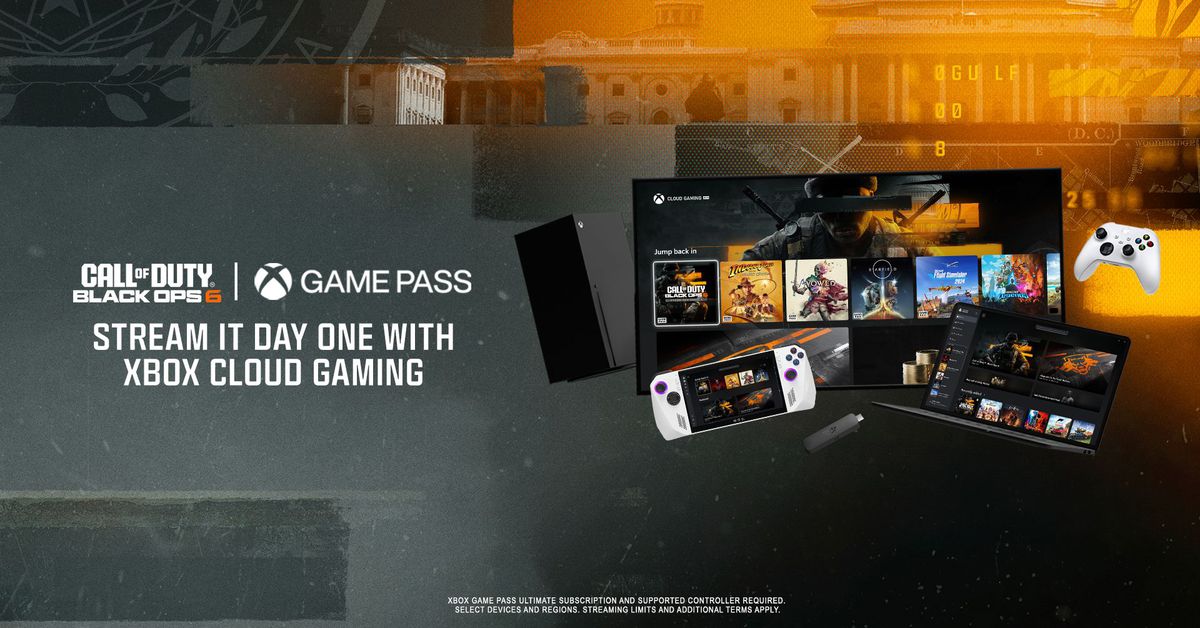
Microsoft is bringing Call of Duty: Black Ops 6, Call of Duty: Modern Warfare III and Call of Duty: Warzone to Xbox Cloud Gaming later this month. This means Call of Duty: Black Ops 6 will be playable on Xbox Cloud Gaming at launch on October 25th, with Warzone and Modern Warfare III cloud support also getting enabled on the same day.
This is the first time a Call of Duty game has been available at launch on Xbox Cloud Gaming, following Microsoft’s acquisition of Activision Blizzard last year. “This is a first for the Call of Duty franchise, and a win for the community,” says Ashley McKissick, corporate vice president of gaming experiences & platforms at Xbox.
You’ll need an Xbox Game Pass Ultimate subscription to access the three Call of Duty games on Xbox Cloud Gaming, and they’ll all be available to play across consoles, PCs, mobile devices, Amazon Fire TV devices, Meta Quest headsets, and some Samsung TVs.
The launch of Call of Duty into Xbox Cloud Gaming will arrive just ahead of Microsoft’s plans to let you stream your own games with Xbox Cloud Gaming next month. I revealed last week that Microsoft is getting ready to test the ability to stream games that you own that aren’t part of the existing Xbox Game Pass library in November.
The test will start with Xbox Insiders at first and a limited selection of additional games, before expanding to more Xbox users and more games. Over the past couple of years, Microsoft has been working to ready its Xbox Cloud Gaming servers to eventually support streaming thousands of games.
Microsoft is also enabling Xbox game purchases in its Xbox mobile app on Android in the US on November 1st. Microsoft is able to do this thanks to a court ruling last week that forces Google to stop requiring Google Play Billing for apps in the Play Store on November 1st. You’ll eventually be able to buy an Xbox game through the Android app and stream it immediately to your device.
Technology
Lenovo Tech World 2024 — all the news as it happens
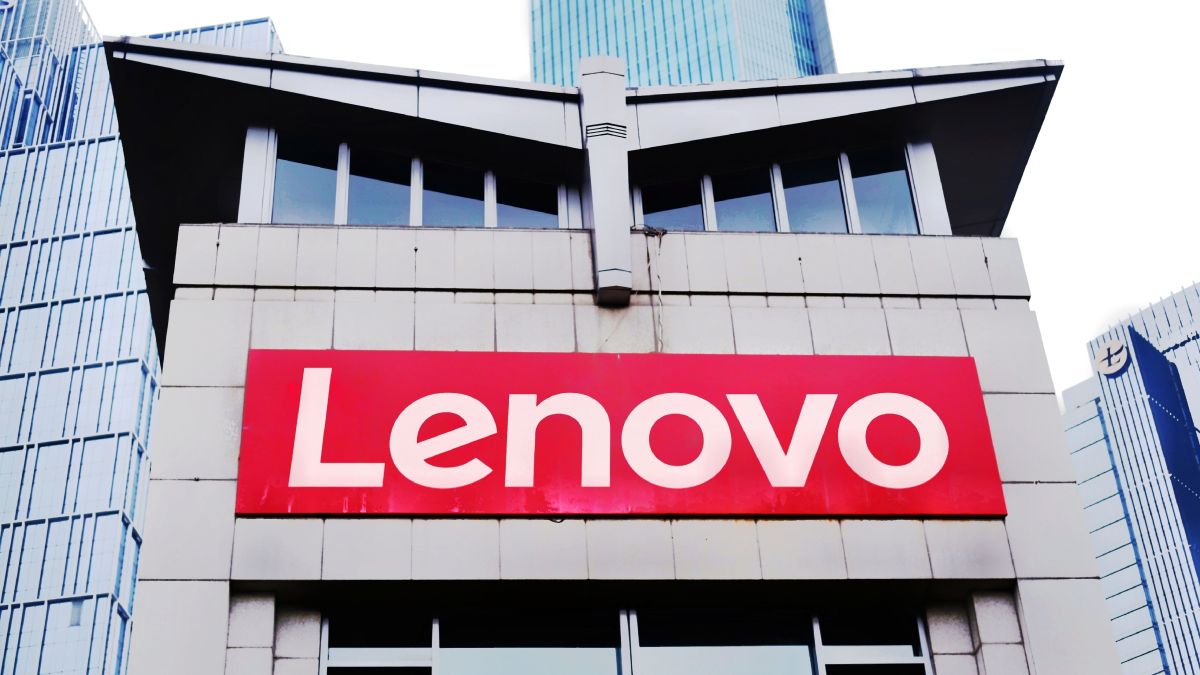
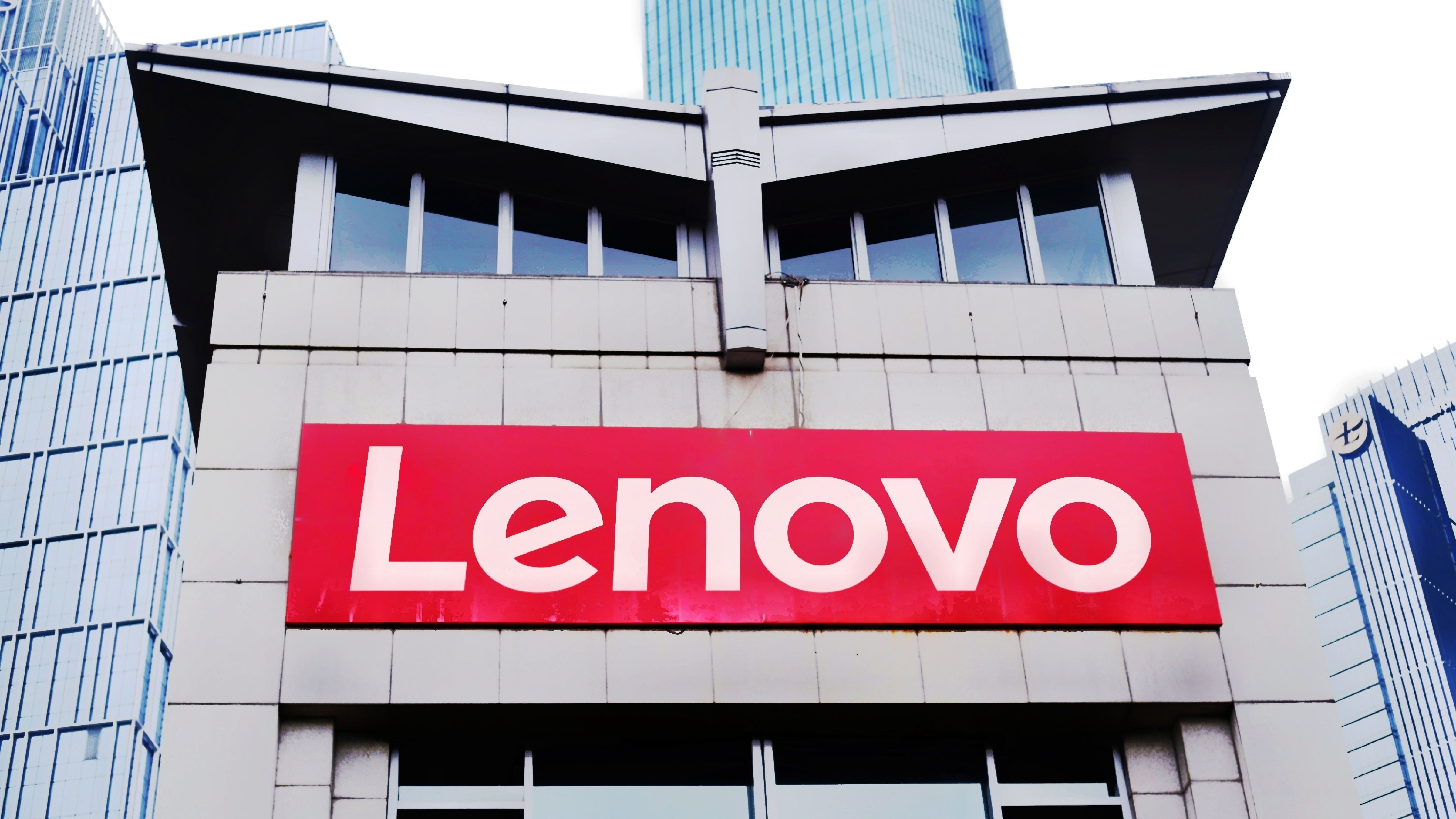
Greetings from Seattle! TechRadar Pro is here for Lenovo Tech World 2024, covering all the latest news and announcements from the show.
We’re expecting a whirlwind few days, full of news and updates on everything from AI PCs to data centers and much more.
The event kicks off tomorrow with an opening keynote from Lenovo Chairman and CEO Yuanqing Yang, so stay tuned for all our live coverage!
Technology
Vuzix M400 smart glasses get Android 13 upgrade for security
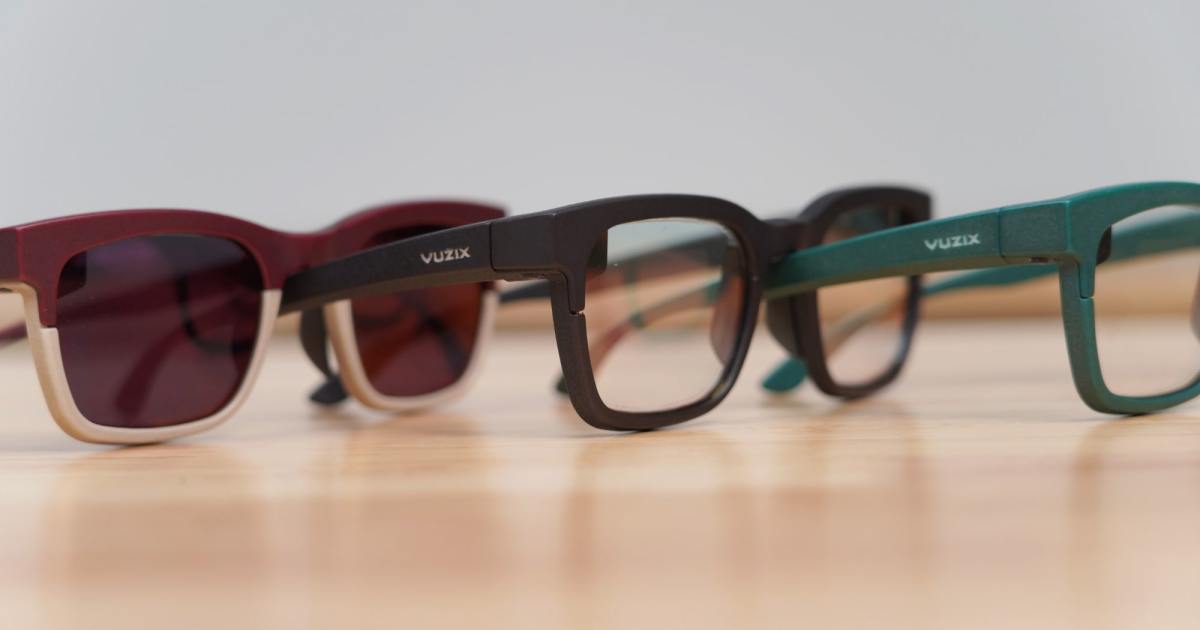

Vuzix has upgraded its flagship M400 enterprise smart glasses with Android 13, offering businesses a more secure, efficient way to manage their wearable tech.
The update ensures that users benefit from advanced security protocols and improved device management, making it easier for companies to deploy these smart glasses across large teams while maintaining the highest levels of security.
Vuzix said the Android 13 upgrade, now available to all M400 users, introduces several key enhancements. These include better Wi-Fi networking algorithms, refined Android permissions management, and an updated developer API. The new Android version also ensures ongoing security support, which is crucial for industries relying on Vuzix’s devices for hands-free, real-time data access.
“Our goal is to keep our smart glasses at the forefront of innovation while giving our customers the tools they need to succeed,” said Paul Travers, president and CEO of Vuzix. “With Android 13, our customers can benefit from advanced security features and streamlined device management, which is crucial for companies planning larger deployments.”
Travers said the update builds on Vuzix’s earlier innovations, including the Ultralite smart glasses introduced in 2023. The Ultralite design, which focuses on practicality with features like hands-free notifications and navigation, set a new standard for smart eyewear. Their lightweight design (weighing just 38 grams) and microLED technology make them a user-friendly, low-power solution, ideal for enterprise and consumer use.
The Android 13 upgrade also empowers developers with updated APIs, moving from Android API 30 to 33, offering a more robust platform for creating tailored software solutions for the M400. This improved compatibility with third-party apps allows businesses to customize their workflows further, boosting productivity and efficiency.
Demand for wearable tech continues to grow across industries such as health care, logistics, and field services, where hands-free operations and real-time data access are crucial. With these enhancements, Vuzix’s M400 smart glasses remain a go-to solution for businesses seeking to improve operational efficiency through cutting-edge wearable technology.
“Deploying Android 13 helps our enterprise customers manage their devices securely and benefit from the latest Android features within third-party apps,” Travers added.
Founded in 1997, Vuzix has a history of innovation in augmented reality and smart glasses technology and provides solutions for industries including defense, health care, and manufacturing.
Technology
Google Pixel 9 Pro vs Xiaomi 14
As we’re waiting for Xiaomi to announce its new flagship smartphones, we’ll compare one of its current ones to one of Google’s. In this article, we’ll compare the Google Pixel 9 Pro vs Xiaomi 14. Both of these smartphones are considered to be rather compact, while being members of the latest flagship lineups from the two companies. Those are the main reasons we’re comparing them.
These two devices are considerably different, though they do have some aspects in common. Like when it comes to design, for example, you’ll see that there are some similarities between them. As per usual, we’ll first list their specifications, and then compare the phones across a number of other categories. We’ll be comparing their designs, displays, performance, battery life, camera performance, and audio.
Specs
Google Pixel 9 Pro vs Xiaomi 14, respectively
– Screen size:
6.3-inch QHD+ OLED (flat, adaptive 120Hz, HDR, 3,000 nits max brightness)
6.36-inch LTPO OLED display (flat, adaptive 120Hz, 3,000 nits max brightness)
– Display resolution:
2856 x 1280
2670 x 1200
– SoC:
Google Tensor G4
Qualcomm Snapdragon 8 Gen 3
– RAM:
16GB (LPDDR5X)
12GB/16GB (LPDDR5X)
– Storage:
128GB/256GB/512GB/1TB (UFS 3.1)
256GB/512GB (UFS 4.0)
– Rear cameras:
50MP (wide, f/1.7 aperture, 1.2um pixel size, OIS, EIS), 48MP (ultrawide, f/1.7 aperture, 123-degree FoV), 48MP (periscope telephoto, f/2.8 aperture, OIS, EIS, 5x optical zoom)
50MP (wide, f/1.6 aperture, 1.2um pixel size, OIS), 50MP (ultrawide, 115-degree FoV, f/2.2 aperture), 50MP (telephoto, f/2.0 aperture, 75mm lens, OIS, PDAF, 3.2x optical zoom)
– Front cameras:
42MP (f/2.2 aperture)
32MP (wide, f/2.0 aperture, 0.7um pixel size)
– Battery:
4,700mAh
4,610mAh
– Charging:
27W wired, 21W wireless (Pixel Stand), 12W Qi wireless, 5W reverse wireless (no charger)
90W wired, 50W wireless, 10W reverse wireless (charger included)
– Dimensions:
152.8 x 72 x 8.5 mm
152.8 x 71.5 x 8.3mm
– Weight:
199 grams
188/193 grams
– Connectivity:
5G, LTE, NFC, Wi-Fi, USB Type-C, Bluetooth 5.3/5.4
– Security:
Ultrasonic in-display fingerprint scanner
In-display fingerprint scanner & facial scanning
– OS:
Android 14
Android 14 with HyperOS
– Price:
$999+
€999
– Buy:
Google Pixel 9 Pro (Best Buy, Google Store)
Xiaomi 14 (Amazon)
Phone Comparisons: Google Pixel 9 Pro vs Xiaomi 14: Design
Looking at the two phones from the front, you’ll notice a lot of similarities. Both devices have flat display with a centered display camera hole, and thin bezels. On top of that, they both have rounded corners, and similar curvature of those corners too. You’ll realize that the physical buttons sit on the right-hand side of both smartphones. The thing is, the Pixel 9 Pro has its power/lock key above volume rocker keys. It’s the other way around on the Xiaomi 14.
The sides are also flat on both phones, all around. The edges of the frame on the sides are slightly rounded, though, on both devices. The back side of the Pixel 9 Pro is flat, while the Xiaomi 14’s is mostly flat, though it does round up towards the edges, on all sides. It has that so-called micro-curved design. You’ll notice a major difference when you look at the camera island on the two devices.
The Pixel 9 Pro has a pill-shaped cutout which is horizontally laid out at the top of the phone’s back side. It contains three cameras and does protrude quite a bit. The Xiaomi 14’s camera island is kind of a square, but with rounded corners. It sits in the top-left corner and also hosts three cameras. Both phones are made out of aluminum and glass, and both devices are actually quite slippery. Do note that the Xiaomi 14 also comes in a model with a vegan leather backplate, but only in China.
They are the exact same when it comes to height, while the Pixel 9 Pro is less than a milimeter wider and thicker. Google’s smartphone is either 11 or 6 grams heavier, depending on what variant of the Xiaomi 14 we compare it to. They’re both IP68 certified for water and dust resistance too.
Phone Comparisons: Google Pixel 9 Pro vs Xiaomi 14: Display
The Google Pixel 9 Pro features a 6.3-inch 2856 x 1280 LTPO OLED display. That display is flat, and it supports HDR10+ content. It also comes with a peak brightness of 3,000 nits. It offers an adaptive refresh rate of up to 120Hz. The display aspect ratio is 20:9, while the screen-to-body ratio is around 87%. The Gorilla Glass Victus 2 sits on top of the display and protects it.

The Xiaomi 14, on the flip side, includes a 6.36-inch 2670 x 1200 LTPO OLED display. That panel is also flat, and it has an adaptive refresh rate of up to 120Hz. This display also supports HDR10+ content, and it has a peak brightness of 3,000 nits. The display aspect ratio is 20:9, and the screen-to-body ratio is around 89%. The Xiaomi 14 does have slightly thinner bezels, which is why. The Gorilla Glass Victus protects this panel.
Both of these displays are excellent. They’re not only plenty bright, but they’re vivid and have great viewing angles. They’re also more than sharp enough and have those inky blacks that people love. The touch response is really good on both of them. These two panels are on par, they’re both great, so… it doesn’t really matter which one you choose.
Phone Comparisons: Google Pixel 9 Pro vs Xiaomi 14: Performance
The Google Pixel 9 Pro is fueled by the Google Tensor G4 processor. That is Google’s new 4nm chip. In this case, it’s paired up with 16GB of LPDDR5X RAM and UFS 3.1 flash storage. The Xiaomi 14 is fueled by the Snapdragon 8 Gen 3, Qualcomm’s 4nm chip, and still the most powerful one the company offers. Xiaomi paired it up with up to 16GB of LPDDR5X RAM (up to 12GB outside of China) and UFS 4.0 flash storage. Neither phone offers expandable storage.
The performance is great on both devices, especially if we’re talking about regular, everyday tasks. Both smartphones are very snappy and can jump between apps like nobody’s business. They also open apps really fast and can do all the basic and advanced tasks without a hitch. That goes for messaging, emailing, image editing, video editing, browsing, multimedia consumption, and so on.
When it comes to gaming, however, the Xiaomi 14 does have an advantage. That chip on the inside does make a difference when it comes to truly demanding games. The Xiaomi 14 handles them better than the Pixel 9 Pro. When it comes to non-graphically demanding games, and those mid-tier ones, it really doesn’t matter which phone runs them. They both get warm when you’re playing games, especially demanding ones. That heat does not affect the performance of either one, though, at least not visibly.
Phone Comparisons: Google Pixel 9 Pro vs Xiaomi 14: Battery
A 4,700mAh battery sits inside the Google Pixel 9 Pro. The Xiaomi 14, on the other hand, has a 4,610mAh battery on the inside. Those are good battery capacities considering the display sizes on these two phones. Both devices do offer really good battery life, actually, which is great to see out of smartphones that are not huge. The Xiaomi 14 was slightly better during our testing, but not by much.
You can cross the 7-hour screen-on-time mark with both of these devices, but it will all depend on your usage and some other aspects. If you throw in games into the mix, you’ll fly under that level. With our usage we were able to get around 7 hours comfortably, with Wi-Fi used most of the time, and with good cell reception. We also didn’t play games on those days, but did use both phones in various other ways, with plenty of camera use.
In regards to charging, the Pixel 9 Pro supports 27W wired, 21W wireless (with Pixel Stand), 12W Qi wireless, and 5W reverse wireless charging. The Xiaomi 14 supports 90W wired, 50W wireless, and 10W reverse wireless charging. The Xiaomi 14 can charge faster in every way, and on top of that it comes with a charger in the box, which is not something we can say for the Pixel 9 Pro.
Phone Comparisons: Google Pixel 9 Pro vs Xiaomi 14: Cameras
Both of these companies included three cameras in these phones. The Pixel 9 Pro has a 50-megapixel main camera (1/1.31-inch camera sensor, f/1.7 aperture, OIS), a 48-megapixel ultrawide camera (123-degree FoV), and a 48-megapixel periscope telephoto camera (5x optical zoom, OIS). The Xiaomi 14 includes a 50-megapixel main camera (1/1.31-inch camera sensor, f/1.7 aperture, OIS), a 50-megapixel ultrawide camera (115-degree FoV), and a 50-megapixel telephoto camera (3.2x optical zoom, OIS, macro).

Both smartphones do a good job when it comes to photography. They both like to provide contrasty shots, though the ones from the Xiaomi 14 look closer to reality. The Pixel 9 Pro throws a lot more processing into the mix, for better or worse. Images from both smartphones are vivid, though once again, the ones from the Xiaomi 14 do look closer to real life. They both do a great job in low light, though the Pixel 9 Pro likes to keep things a bit brighter than the Xiaomi 14. It’s a matter of preference which style you like better. Leica’s influence is visible on the Xiaomi 14.
Their ultrawide cameras do a good job of keeping a color profile similar to that of the main shooters. They do a good job in both good lighting and low light, but the Pixel 9 Pro does a better job overall, especially in low light. The Xiaomi 14 does not have a periscope telephoto camera, but it can compete, and mostly win at zoom levels below 5x, though. And that goes for all lighting situations. Google easily wins in everything above that.
Audio
Yes, both of these smartphones have stereo speakers, though neither of them includes an audio jack. Those stereo speakers are good on both smartphones, and they have similar level of loudness, even though the Pixel 9 Pro is a bit better in that regard. The sound quality is good on both sides.
Considering there is no audio jack, you can use their Type-C ports to connect your wired headphones. If not, there’s always Bluetooth for wireless connectivity. The Pixel 9 Pro has Bluetooth 5.3 support, while the Xiaomi 14 comes with Bluetooth 5.4.
Technology
Xbox is hosting a partner showcase on October 17 at 1PM ET
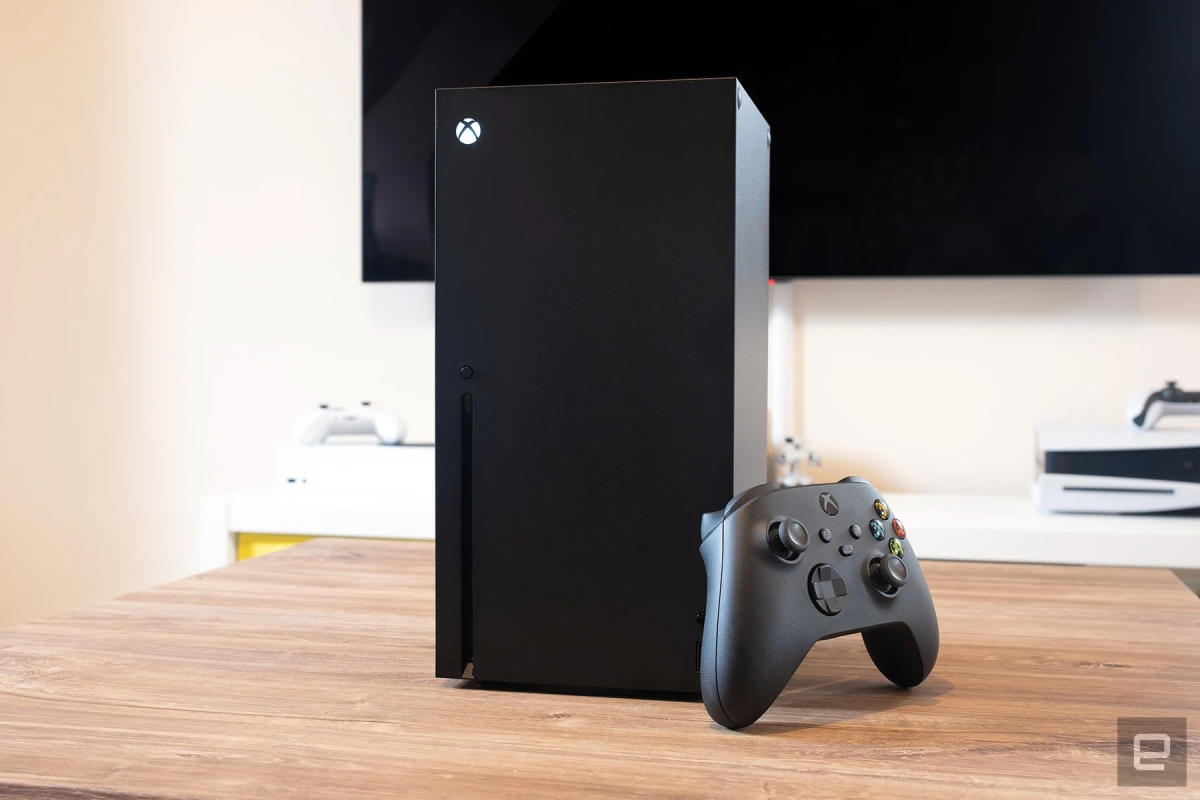
Here’s a little something to liven up the week in gamerland: Xbox is hosting a third-party games showcase on Thursday, October 17 at 1PM ET. A 4K, 60 fps stream will be available on YouTube in English with live subtitles in 16 other languages (Xbox will add subtitles for more languages after the fact). The Xbox channel will have versions of the show with audio description and American Sign Language (ASL). A British Sign Language version will be available on the Xbox On channel. You’ll also be able to watch the stream in English and ASL on Twitch, as well as on, uh, LinkedIn.
The Partner Preview stream will run for around 25 minutes and it will include more than a dozen trailers from Xbox’s partners. You’ll get a look at the next Alan Wake 2 expansion (The Lake House), Like a Dragon: Pirate Yakuza in Hawaii gameplay and some bosses in a Soulslike called Wuchang: Fallen Feathers. Xbox is also promising some new game reveals along with release date announcements. As you’d expect, many of these titles will be coming to Game Pass in one form or another.
Xbox is ending the year with a reasonably packed slate of first-party games, with Call of Duty: Black Ops 6, Microsoft Flight Simulator 2024 and Indiana Jones and the Great Circle yet to come. Still, it’s always nice to see platform holders shine the spotlight on games from third-party publishers and developers.
Technology
PicsArt’s creative AI playbook: A vision for contextual intelligence, AI agents

Join our daily and weekly newsletters for the latest updates and exclusive content on industry-leading AI coverage. Learn More
Whether you’re an Android or iOS person, most people have heard of PicsArt. The platform launched more than a decade ago and has become one of the go-to services for all things image and video editing, with more than 150 million monthly active users.
However, it hasn’t been an easy journey for the company. Despite being an early mover in the smartphone-based editing domain, the company has seen significant competition from players like Canva and Adobe who have been playing a cat-and-mouse game for quite some time—building their own similar products. When I spoke with Artavazd Mehrabyan, the CTO of the company, at the recent WCIT conference in Armenia, he was pretty vocal about the challenges, saying it is tough to be or at least stay different for long in this market.
“A lot of things that PicsArt had before were copied into the competitors. PicsArt was the first all-in-one editing service on mobile. There was no other player before 2011. We started with this approach and it was copied, among many other things,” Mehrabyan said. He pointed out that the same is happening with AI, where competitors, including mainstream photo services, are offering very similar capabilities.
For example, PicsArt offers object generation, allowing users to use advanced AI to create required photo elements. The same capability has also been incorporated into other products in the category, creating an overlap of sorts.

However, instead of pushing to stand out by adding more tools to its existing batch of over two dozen AI capabilities, the company is looking to make a mark on users by improving the quality of what it is delivering. Specifically, Mehrabyan said, the focus is on how they are productizing and tailoring the features to help customers get to their goal – whether they want to remove a specific object from a vacation image or generate visually appealing advertisements, complete with images and copy.
Training high-quality creative AI
In the early stage, when AI was not a thing, Mehrabyan said most of PicsArt’s technology research and effort went towards making mobile-based editing seamless.
“It was very hard to get all these editing functionality working on the device offline. Then, the next challenge was to scale our ecosystem and infrastructure to support a surging user base. This took us to hybrid infrastructure. We started with multi-cloud and a data center, which, till now, continues to be the best solution as it’s more cost-efficient, highly performant and very flexible,” Mehrabyan explained.
With this tech stack in place, the company launched its first AI feature in 2016, running a bunch of small models offline on user devices. This gradually transformed into a large-scale AI effort, with the company transforming into an AI-first organization and leveraging its infra and backend services to serve larger models and APIs for more enhanced capabilities like background removal/replacement. More recently, with the generative AI wave taking shape, PicsArt started training its own creative AI models from scratch.
In the creative domain, it is very easy to lose a user. A small error here or there (leading to low-quality results) and there’s a good chance the person won’t come back again. To prevent this, PicsArt is extremely focused on the data side of things. It is selectively using data from its own network – marked by users as public and free to edit – for training the AI models.
“We have a special ‘free to edit’ license. If you are posting publicly and tagging your image – from stock photo across any category to a sticker or background – as free to edit, it allows another user of the service to reuse or work on top of it. So, in essence, the user is contributing this image to the community and PicsArt itself,” Mehrabyan said.
The license has been in place from the early days of the service and has given PicsArt a massive stock of user-generated content for training AI. However, as the CTO pointed out, not all of that is of high quality and ready to use right away. The data has to pass through multiple layers of cleansing and processing, from manual and AI-driven, to be transformed into a safe training-ready dataset.
“At the end of this, we have quite a big dataset that is proprietary to PicsArt. We don’t need to have additional data,” he said.
However, having a large volume of high-quality data in hand was just one part of the puzzle.
The real challenge for PicsArt, as Mehrabyan described, was to build the “data flywheel.” A self-reinforcing cycle covering not only data accessibility but also aspects like how to annotate data, how to use it and eventually how to leverage it as part of a continuous learning process to improve over time.
Establishing a feedback loop to achieve this was a long and complex process, he said.
“We built our own annotation technology. We internally developed all related infrastructure and ecosystem technologies, including those for identifying and classifying images, tagging them and adding different types of labels to them,” Mehrabyan said. “Then, we created a team to help refine the pipeline and give feedback over time. It’s mostly been very automatic, AI-driven with human feedback in between so that we can have continuous improvement.”
Feedback loop leads to contextual intelligence
While the human-driven feedback loop has been a critical part in improving PicsArt’s products – enhancing the quality of the outputs they generate – it is also taking the company towards what Mehrabyan calls “contextual intelligence” or the ability of the platform to understand user needs and deliver exactly what they want.
This function is particularly important for the platform’s growing base of business-focused users who are looking to get work done right on their smartphones. Whether that’s generating graphics or a full-fledged ad for a social media campaign. The platform is still mostly used by individuals looking to edit personal content, but the company says its research shows many want to take it to work, especially for marketing use cases.
“Contextual intelligence not only tracks your history or what you were doing to help you to be more productive in your journey but also predicts your next intent. It’s both reactive and proactive,” he explained.
This way, each time an individual uses the platform to create something for their work, they won’t have to define brand language and tonality. The product would already have context in place and use that to generate the required content. Mehrabyan said the company also plans to release a brand kit capability that would allow users to tweak this context to their needs and further improve the quality of generations.
Creative AI agents on the way
Eventually, Mehrabyan says contextual intelligence will lead PicsArt to an agent-based ecosystem. This is where users will have a copilot of sorts – with all relevant knowledge about their work and design preferences – to help them with their tasks.
“This copilot would understand your intent and historical context to provide interactive support and guide you to be even more productive. We see this use case as integrated within the whole PicsArt ecosystem, from the user’s perspective,” he said.
Beyond this, he also expects AI agents will help PicsArt users execute some tasks in bulk. For instance, if a user has to apply the same design or logic of design to several resources, they could use an agent to automate the workflow on their behalf.
This way, the company hopes to be a key driver in the creative industry, sitting ahead of its competitors and allowing users to grow their creativity and eventually businesses, without too much effort.
Mehrabyan noted that AI will bring about a major change but users – from businesses to designers and marketers – must try to understand how it affects them and take advantage of the changes to do more than currently possible.
“From the current point of view, it will affect negatively. But if you take perspective from a different side, like from the future, you will see that those people will leverage AI to learn a lot more. They will no longer be narrow specialists. They’ll cover broader areas deeper and faster with the help of AI,” he noted.
According to Future Markets Insights, the global AI image editor market is projected to grow from $80.3 million in 2024 to $217.9 million by 2034, with a CAGR of 10.5%. Meanwhile, AI-driven generation, which has become a core part of most image editing tools/services, including PicsArt, is estimated to grow 38% from $8.7 billion in 2024 to $60.8 billion in 2030.
Source link
-

 Science & Environment4 weeks ago
Science & Environment4 weeks agoHyperelastic gel is one of the stretchiest materials known to science
-

 Technology4 weeks ago
Technology4 weeks agoWould-be reality TV contestants ‘not looking real’
-

 Science & Environment4 weeks ago
Science & Environment4 weeks agoHow to unsnarl a tangle of threads, according to physics
-

 Science & Environment4 weeks ago
Science & Environment4 weeks ago‘Running of the bulls’ festival crowds move like charged particles
-

 Science & Environment4 weeks ago
Science & Environment4 weeks agoMaxwell’s demon charges quantum batteries inside of a quantum computer
-

 Science & Environment4 weeks ago
Science & Environment4 weeks agoLiquid crystals could improve quantum communication devices
-

 Womens Workouts3 weeks ago
Womens Workouts3 weeks ago3 Day Full Body Women’s Dumbbell Only Workout
-

 Science & Environment4 weeks ago
Science & Environment4 weeks agoQuantum ‘supersolid’ matter stirred using magnets
-

 Technology3 weeks ago
Technology3 weeks agoIs sharing your smartphone PIN part of a healthy relationship?
-

 Science & Environment3 weeks ago
Science & Environment3 weeks agoX-rays reveal half-billion-year-old insect ancestor
-

 Science & Environment4 weeks ago
Science & Environment4 weeks agoWhy this is a golden age for life to thrive across the universe
-

 Science & Environment4 weeks ago
Science & Environment4 weeks agoSunlight-trapping device can generate temperatures over 1000°C
-

 Science & Environment4 weeks ago
Science & Environment4 weeks agoNerve fibres in the brain could generate quantum entanglement
-

 Science & Environment4 weeks ago
Science & Environment4 weeks agoQuantum forces used to automatically assemble tiny device
-

 Science & Environment4 weeks ago
Science & Environment4 weeks agoHow to wrap your mind around the real multiverse
-

 Science & Environment4 weeks ago
Science & Environment4 weeks agoITER: Is the world’s biggest fusion experiment dead after new delay to 2035?
-
News4 weeks ago
the pick of new debut fiction
-

 Science & Environment4 weeks ago
Science & Environment4 weeks agoA slight curve helps rocks make the biggest splash
-

 News3 weeks ago
News3 weeks agoOur millionaire neighbour blocks us from using public footpath & screams at us in street.. it’s like living in a WARZONE – WordupNews
-

 Science & Environment4 weeks ago
Science & Environment4 weeks agoLaser helps turn an electron into a coil of mass and charge
-

 Science & Environment4 weeks ago
Science & Environment4 weeks agoPhysicists are grappling with their own reproducibility crisis
-

 Science & Environment4 weeks ago
Science & Environment4 weeks agoNuclear fusion experiment overcomes two key operating hurdles
-

 News4 weeks ago
News4 weeks ago▶️ Hamas in the West Bank: Rising Support and Deadly Attacks You Might Not Know About
-

 Science & Environment4 weeks ago
Science & Environment4 weeks agoTime travel sci-fi novel is a rip-roaringly good thought experiment
-
Business2 weeks ago
Eurosceptic Andrej Babiš eyes return to power in Czech Republic
-

 News4 weeks ago
News4 weeks agoYou’re a Hypocrite, And So Am I
-

 Sport4 weeks ago
Sport4 weeks agoJoshua vs Dubois: Chris Eubank Jr says ‘AJ’ could beat Tyson Fury and any other heavyweight in the world
-

 News4 weeks ago
News4 weeks ago▶️ Media Bias: How They Spin Attack on Hezbollah and Ignore the Reality
-

 Science & Environment4 weeks ago
Science & Environment4 weeks agoCaroline Ellison aims to duck prison sentence for role in FTX collapse
-

 News4 weeks ago
News4 weeks agoNew investigation ordered into ‘doorstep murder’ of Alistair Wilson
-

 Science & Environment4 weeks ago
Science & Environment4 weeks agoA new kind of experiment at the Large Hadron Collider could unravel quantum reality
-

 Technology2 weeks ago
Technology2 weeks agoQuantum computers may work better when they ignore causality
-
Business2 weeks ago
Should London’s tax exiles head for Spain, Italy . . . or Wales?
-

 Football2 weeks ago
Football2 weeks agoFootball Focus: Martin Keown on Liverpool’s Alisson Becker
-

 Sport2 weeks ago
Sport2 weeks agoWatch UFC star deliver ‘one of the most brutal knockouts ever’ that left opponent laid spark out on the canvas
-

 Science & Environment4 weeks ago
Science & Environment4 weeks agoRethinking space and time could let us do away with dark matter
-
News4 weeks ago
The Project Censored Newsletter – May 2024
-

 Technology3 weeks ago
Technology3 weeks agoWhy Machines Learn: A clever primer makes sense of what makes AI possible
-

 Technology2 weeks ago
Technology2 weeks ago‘From a toaster to a server’: UK startup promises 5x ‘speed up without changing a line of code’ as it plans to take on Nvidia, AMD in the generative AI battlefield
-

 MMA2 weeks ago
MMA2 weeks agoConor McGregor challenges ‘woeful’ Belal Muhammad, tells Ilia Topuria it’s ‘on sight’
-

 Technology2 weeks ago
Technology2 weeks agoMicrophone made of atom-thick graphene could be used in smartphones
-
Business2 weeks ago
Ukraine faces its darkest hour
-

 News4 weeks ago
News4 weeks agoIsrael strikes Lebanese targets as Hizbollah chief warns of ‘red lines’ crossed
-

 Health & fitness4 weeks ago
Health & fitness4 weeks agoThe secret to a six pack – and how to keep your washboard abs in 2022
-

 Technology4 weeks ago
Technology4 weeks agoThe ‘superfood’ taking over fields in northern India
-

 Science & Environment4 weeks ago
Science & Environment4 weeks agoA tale of two mysteries: ghostly neutrinos and the proton decay puzzle
-

 Science & Environment4 weeks ago
Science & Environment4 weeks agoFuture of fusion: How the UK’s JET reactor paved the way for ITER
-

 Technology3 weeks ago
Technology3 weeks agoGet ready for Meta Connect
-

 Technology2 weeks ago
Technology2 weeks agoUniversity examiners fail to spot ChatGPT answers in real-world test
-

 Science & Environment4 weeks ago
Science & Environment4 weeks agoUK spurns European invitation to join ITER nuclear fusion project
-
Politics4 weeks ago
UK consumer confidence falls sharply amid fears of ‘painful’ budget | Economics
-

 TV3 weeks ago
TV3 weeks agoCNN TÜRK – 🔴 Canlı Yayın ᴴᴰ – Canlı TV izle
-

 News3 weeks ago
News3 weeks agoWhy Is Everyone Excited About These Smart Insoles?
-

 Health & fitness2 weeks ago
Health & fitness2 weeks agoThe 7 lifestyle habits you can stop now for a slimmer face by next week
-
Politics3 weeks ago
Robert Jenrick vows to cut aid to countries that do not take back refused asylum seekers | Robert Jenrick
-

 Science & Environment4 weeks ago
Science & Environment4 weeks agoPhysicists have worked out how to melt any material
-

 Sport4 weeks ago
Sport4 weeks agoUFC Edmonton fight card revealed, including Brandon Moreno vs. Amir Albazi headliner
-

 News4 weeks ago
News4 weeks agoHow FedEx CEO Raj Subramaniam Is Adapting to a Post-Pandemic Economy
-

 Science & Environment4 weeks ago
Science & Environment4 weeks agoWhy we need to invoke philosophy to judge bizarre concepts in science
-

 CryptoCurrency4 weeks ago
CryptoCurrency4 weeks agoCardano founder to meet Argentina president Javier Milei
-

 MMA3 weeks ago
MMA3 weeks agoRankings Show: Is Umar Nurmagomedov a lock to become UFC champion?
-

 Science & Environment3 weeks ago
Science & Environment3 weeks agoMeet the world's first female male model | 7.30
-

 Womens Workouts3 weeks ago
Womens Workouts3 weeks ago3 Day Full Body Toning Workout for Women
-

 Technology3 weeks ago
Technology3 weeks agoRobo-tuna reveals how foldable fins help the speedy fish manoeuvre
-

 Servers computers3 weeks ago
Servers computers3 weeks agoWhat are the benefits of Blade servers compared to rack servers?
-

 Politics4 weeks ago
Politics4 weeks agoTrump says he will meet with Indian Prime Minister Narendra Modi next week
-

 Science & Environment4 weeks ago
Science & Environment4 weeks agoBeing in two places at once could make a quantum battery charge faster
-
Business4 weeks ago
Thames Water seeks extension on debt terms to avoid renationalisation
-
Politics4 weeks ago
‘Appalling’ rows over Sue Gray must stop, senior ministers say | Sue Gray
-

 Womens Workouts3 weeks ago
Womens Workouts3 weeks agoBest Exercises if You Want to Build a Great Physique
-

 Womens Workouts3 weeks ago
Womens Workouts3 weeks agoEverything a Beginner Needs to Know About Squatting
-

 News3 weeks ago
News3 weeks agoFour dead & 18 injured in horror mass shooting with victims ‘caught in crossfire’ as cops hunt multiple gunmen
-

 Technology2 weeks ago
Technology2 weeks agoThe best robot vacuum cleaners of 2024
-

 Entertainment1 week ago
Entertainment1 week agoChristopher Ciccone, artist and Madonna’s younger brother, dies at 63
-

 Business1 week ago
Business1 week agoWhen to tip and when not to tip
-

 News4 weeks ago
News4 weeks agoChurch same-sex split affecting bishop appointments
-

 CryptoCurrency4 weeks ago
CryptoCurrency4 weeks agoEthereum is a 'contrarian bet' into 2025, says Bitwise exec
-

 News4 weeks ago
News4 weeks agoBrian Tyree Henry on voicing young Megatron, his love for villain roles
-

 Health & fitness4 weeks ago
Health & fitness4 weeks agoThe maps that could hold the secret to curing cancer
-
Business4 weeks ago
JPMorgan in talks to take over Apple credit card from Goldman Sachs
-

 Science & Environment4 weeks ago
Science & Environment4 weeks agoTiny magnet could help measure gravity on the quantum scale
-

 CryptoCurrency4 weeks ago
CryptoCurrency4 weeks agoDecentraland X account hacked, phishing scam targets MANA airdrop
-

 CryptoCurrency4 weeks ago
CryptoCurrency4 weeks agoBitcoin miners steamrolled after electricity thefts, exchange ‘closure’ scam: Asia Express
-

 CryptoCurrency4 weeks ago
CryptoCurrency4 weeks agoDZ Bank partners with Boerse Stuttgart for crypto trading
-

 CryptoCurrency4 weeks ago
CryptoCurrency4 weeks agoLow users, sex predators kill Korean metaverses, 3AC sues Terra: Asia Express
-

 CryptoCurrency4 weeks ago
CryptoCurrency4 weeks agoBlockdaemon mulls 2026 IPO: Report
-

 News4 weeks ago
News4 weeks agoBrian Tyree Henry on voicing young Megatron, his love for villain roles
-

 Science & Environment3 weeks ago
Science & Environment3 weeks agoCNN TÜRK – 🔴 Canlı Yayın ᴴᴰ – Canlı TV izle
-

 Travel3 weeks ago
Travel3 weeks agoDelta signs codeshare agreement with SAS
-

 News3 weeks ago
News3 weeks agoUS Newspapers Diluting Democratic Discourse with Political Bias
-

 Technology4 weeks ago
Technology4 weeks agoiPhone 15 Pro Max Camera Review: Depth and Reach
-

 Science & Environment4 weeks ago
Science & Environment4 weeks agoHow one theory ties together everything we know about the universe
-

 Science & Environment4 weeks ago
Science & Environment4 weeks agoQuantum time travel: The experiment to ‘send a particle into the past’
-

 Science & Environment4 weeks ago
Science & Environment4 weeks agoMost accurate clock ever can tick for 40 billion years without error
-

 CryptoCurrency4 weeks ago
CryptoCurrency4 weeks agoDorsey’s ‘marketplace of algorithms’ could fix social media… so why hasn’t it?
-

 CryptoCurrency4 weeks ago
CryptoCurrency4 weeks agoBitcoin bulls target $64K BTC price hurdle as US stocks eye new record
-
Business4 weeks ago
How Labour donor’s largesse tarnished government’s squeaky clean image
-

 CryptoCurrency4 weeks ago
CryptoCurrency4 weeks agoCoinbase’s cbBTC surges to third-largest wrapped BTC token in just one week
-

 News3 weeks ago
News3 weeks agoShocking ‘kidnap’ sees man, 87, bundled into car, blindfolded & thrown onto dark road as two arrested
-

 Politics3 weeks ago
Politics3 weeks agoHope, finally? Keir Starmer’s first conference in power – podcast | News

You must be logged in to post a comment Login